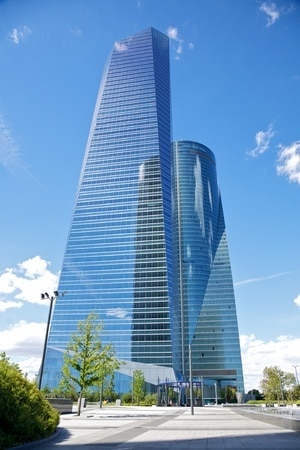 After multiple postponements and reschedules, you are finally in front of upper management to present your business case upon which you have spent many hours to make it as bullet-proof as possible. It’s your turn, you’re on. You pass the packets around the table, thank them for their time, and start walking them through your case.
After multiple postponements and reschedules, you are finally in front of upper management to present your business case upon which you have spent many hours to make it as bullet-proof as possible. It’s your turn, you’re on. You pass the packets around the table, thank them for their time, and start walking them through your case.
You highlight some key points in the one-page executive summary and begin to point out the tables of data, the areas of concern, and the options you evaluated on the following pages. But you notice that none of them are looking at your PowerPoint presentation that you had rehearsed. A few are thumbing around on their phones and the others are flipping through the pages of your business case skipping over all of the justification you had painstakingly prepared until they reach the last page where lies the one thing they are looking for – the bottom line.
You see a head shaking, a grimace on another manager’s face, and one is clearly doing some of their own calculations on their phone. It’s over, you know the inevitable answer – “Let’s see if we can get it into the budget in the next year or two. We just don’t have the money for it now.”
But they didn’t even give you a chance to present all the reasons why this can’t wait – the numbers, the various options you considered, and your well thought-out recommendation. Oh well, they said no last year; we’ll try again next year… We’ll continue with the band-aid fixes and heightened risks for another year…
Sound familiar? The above scenario, while maybe a bit over-dramatic, is an all-to-common experience for most facility managers. This is one of the key reasons our deferred maintenance backlog continues to grow and our facility staff resemble firefighters (and magicians at times) more than trained maintenance personnel. We have to do something different; we must start winning more and more of these battles – but how?
First, we need a plan – a capital replacement program, more specifically. See Fail to Plan, Plan to Fail for more on what a capital replacement program is, why you need one, and how to implement. Our focus in this article is assembling a business case, which supports your capital replacement program and soliciting the resources to improve your facility program, such as justifying the need for more staff or the purchase and implementation of a CMMS. In FM360’s next article, we will discuss how to present and sell your business case.
Let’s start by evaluating the structure of the tried and well, not-so-true business case template that we have used for years. Frankly, it is outdated for today’s high-paced, data-driven society. Consider the sheer number of e-mails we receive in a day, especially at the executive level. All the decisions that have to made, the barrage of questions that need to be answered, etc. We simply don’t have the time.
In fact, one study from BrainStatistics found that the average adult’s attention span is only 8 seconds – yep, that’s all it takes until they are bucked off and thinking about something else. The presenter at one conference I attended stated that when communicating via e-mail, if you do not get a hold of the reader in the first seven words, their gone. I’m guilty of that myself; quickly skimming and triaging my e-mail to prioritize and categorize. In doing such, it is easy to miss important details, questions, and requests.
Contrast that with the business case template. We start with a verbose executive summary, followed perhaps by another paragraph or two about the current condition and why action is necessary. Then we spend a number of pages trying to justify the need in both paragraph and data table format. We then lead into the three or so options we considered, along with their respective total cost of ownership analysis, and our recommendation. Finally, the last page tabulates the cost and somewhere buried in the numbers is the bottom line. There is simply too much information. The key points get lost in all of the text and numbers dispersed throughout the stack of papers. We need to think more like an executive – what’s the risk, what’s the potential impact to the bottom line, and of course, the cost. Why must they act now? Why does your request need the money when there are so many other ways to spend it? We need to follow the good old K.I.S.S. approach – keep it short and simple. Hence the need for the “In-Your-Face Business Case”
Assembling a Simple Business Case
In the “In-Your-Face Business Case”, we begin with a very succinct description of the system, the program, or whatever it is we will be discussing. Nothing too technical, only a sentence or two. I also like to include the Facility Department’s vision/mission statement or tag-line on most formal documents that are circulated to management and stakeholders – something short and simple that shows the focus of our facility team and how we align with the organizations vision, mission, and goal. Click here to see a sample business case at FM360Online.com.
I provide sections to highlight the current condition, the risk, and associated impact – rating them and providing concise justifications for the ratings; I recommend bullet points and bolding key words. In the Impact section, I suggest highlighting safety issues, possible legal ramifications, social & marketplace implications, client perspective, and potential environmental concerns, if applicable. Additionally, calculate the costs or benefits for potential employee productivity impact and the positive or negative affect on revenue generation; see the Rule of 100/10/1 and Facilities Not a Profit Center articles for help in determining those numbers.
Lastly, highlight the cost and the necessary action date for successful implementation or to avoid the aforementioned risk. You might want to include a brief justification for the specified date.
All of the above information is on the first page. Eliminating the need to flip through pages or filter through text and data tables in the meeting. All necessary information is clearly there in their face.
I like to include a high-level implementation plan and/or timeline on page two, noting critical decision points; basically, key milestones and actions required of them (e.g. approval to purchase equipment, hire staff, etc.). Because if you win them in presenting your data on the first page, then hopefully they will ask “What’s next?”, and we can provide that answer.
Granted you will likely not get away with providing only a page or two, because, inevitably, there are at least one or two detail-oriented people in the room that want more information. That’s what the subsequent pages are for; there you can include your pro-forma statements, the analysis, and any other pertinent information. Try using more pictures and graphs than words. The primary intent of the in-your-face business case is to keep their attention and sell your proposal to management at the meeting.
With that in mind, I encourage you to sign-up for FM360’s newsletter and visit our site to read the follow-up article, Selling Your Business Case and other facility related articles. This article and the associated sample will hopefully give you a different tact to try in soliciting support and funding from management for your initiatives.
Additionally, you may be interested in registering for FM360’s online training series, including FM101 – The Fundamentals of a FM Program and FM Leadership.






